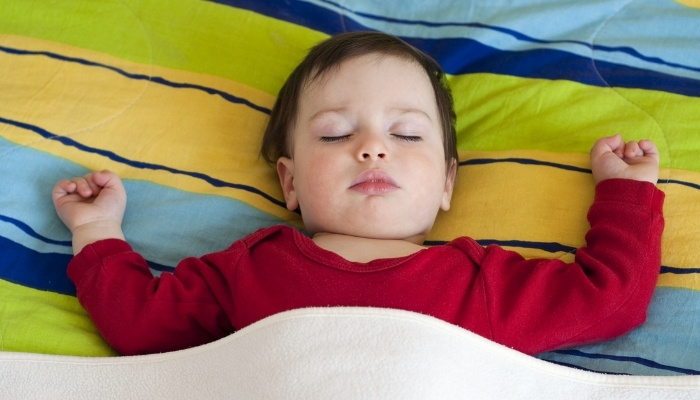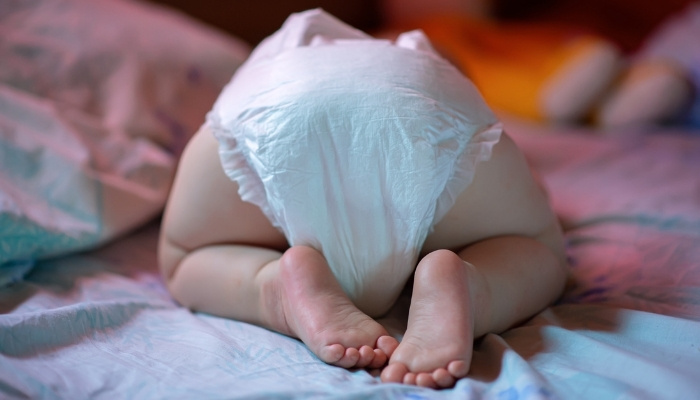As your child grows from an infant to a toddler, you may observe some peculiar behaviors. Despite appearing illogical to adults, your toddler has their own motivations behind their actions.
Why do toddlers sleep on their knees? Toddlers sleep on their knees because it reminds them of being in the womb. It’s also comfortable and helps prepare toddlers for the crawling they are almost ready to do. Basically, it offers comfort and is a good practical choice for learning.
Toddlers have a lot of habits that help them as they grow and develop. Discovering the reasoning behind them will allow you to understand your toddler better.
Why Toddlers Sleep on Their Knees
You need to put your baby on her back to sleep when she is small, but you will likely start to notice that she makes her way to a child’s pose-like position as she grows, sleeping mainly on her knees.
Babies who are 6 months to 1 year old are probably getting ready to crawl when they sleep on their knees.
1. Mimics Being in the Womb
Your baby was in the womb for nine months, and her body remembers the position she was in during that time. It’s normal for your toddler to revert back to that position for comfort.
Sleeping on the knees with the bum in the air likely helps your toddler sleep better.
2. Feels Comfortable
There’s a reason people assume the fetal position when they need comfort or to destress. It works! Though the particular angle of the position may not look comfortable to adults, it is great for toddlers.
3. Easier To Start Moving Again When They Wake Up
You have probably noticed that once your toddler learns to move, she doesn’t want to stop. Sleeping on her knees lets her start the day moving easily when she wakes. She doesn’t even have to roll over to start the action.
4. Similar to Sensation of Being Held
Holding your baby to your body is encouraged because it offers comfort and body warmth.
Though your toddler isn’t against anyone’s body when she sleeps on her knees, just having her chest against the crib mattress can mimic the feeling of being held.
5. Conserves Body Heat
Your toddler doesn’t have a ton of body fat, and it’s not a good idea to let a child younger than one sleep with blankets or pillows. By folding the body together, your toddler can conserve body heat and stay warm.
Toddler Sleep Positions
Though sleeping on the knees is popular with toddlers, they have some other sleep positions they like to use as well.
The Starfish
The starfish is exactly what it sounds like. Your toddler will sprawl on her back with her arms and legs splayed around her. This position is adorable and also takes up most of the room in any bed she happens to be in at the time.
The Ball
Some toddlers ball up on their sides. This has some of the same benefits as sleeping on the knees since it keeps toddlers warm and reminds them of the womb.

Toddler Sleep Habits
As you know, your toddler is very much their own person with personal likes and dislikes. It is a delight to watch them grow and develop certain habits and patterns.
While some of these habits may be totally unique to your child, many are common to toddlers everywhere.
1. Sucking Their Thumb
Your toddler may suck his thumb while she sleeps because it offers comfort that helps her rest. Babies are born with the instinct to suck and root, and they will do this even when they aren’t seeking breastmilk. It’s simply a source of comfort.
2. Resisting Going to Sleep
I have a short video of my child when she was nine months old and so exhausted she couldn’t keep her eyes open. She sat on her blanket, swaying back and forth but refusing to let us hold her or to surrender to sleep.
This is a very normal part of toddler sleep patterns. Their bodies and minds are growing at such a fast rate that it’s almost like they don’t know how to turn off, no matter how tired they are.
3. Sleeping Longer at Night
The good news about toddlers is they will sleep longer at night. All that crawling and scooting around the house will wear them out. They are eating solids, and this keeps them full longer, so nighttime feedings decrease as well.
4. Cuddling With Favorite Toy or Blanket
Your child will likely have an item that they never want to part with, day or night. When it’s time for bed, make sure you can find this toy or blanket. It offers toddlers familiarity when they rest, and they may sleep with it for years.
5. Kicking off Covers
When your toddler is finally old enough to have covers, don’t expect them to actually enjoy them. While some toddlers love to snuggle up in the sheets and blankets, many will kick them off the minute they start to fall asleep.
6. OCD About Bedtime Routine
It’s important to teach your child how to have a bedtime routine. It helps your toddler wind down for the night and recognize that bedtime is near.
However, some toddlers become slightly obsessed with their bedtime routines. They refuse to sleep if they miss a step.
7. Babbling During Sleep
Just because your toddler is asleep doesn’t mean you’re going to get a totally quiet night. Toddlers may practice their verbal skills while sleeping by babbling or making noise throughout the night.
8. Grinding Teeth
A child may grind her teeth because she’s teething or because she’s anxious. This is common in toddlers, but ask your doctor or dentist if you are concerned.
Related Questions:
Why Do Babies Suck Their Thumb?
Babies suck their thumbs to soothe themselves. When they are upset or sleepy, they use their natural sucking instinct and put their thumbs in their mouths.
This is a normal habit, but your child won’t do it forever. If it goes on for longer than the preschool years, you might want to ask your doctor about checking your child for anxiety.
Why Do Children Grind Their Teeth?
Teething will be a major part of your parenting journey, and it may also be the reason your child is grinding her teeth. Rubbing the gums or teeth together can help your child soothe the pain.
Closing Thoughts
Toddlers have habits that seem strange to adults, but most of them are grounded in reason or necessity.
Kristy is the mother of four, including identical twins. With a background in education and research, she is constantly learning more about parenting and raising multiples. When she has spare time, she enjoys hiking into the woods with a great book to take a break.

